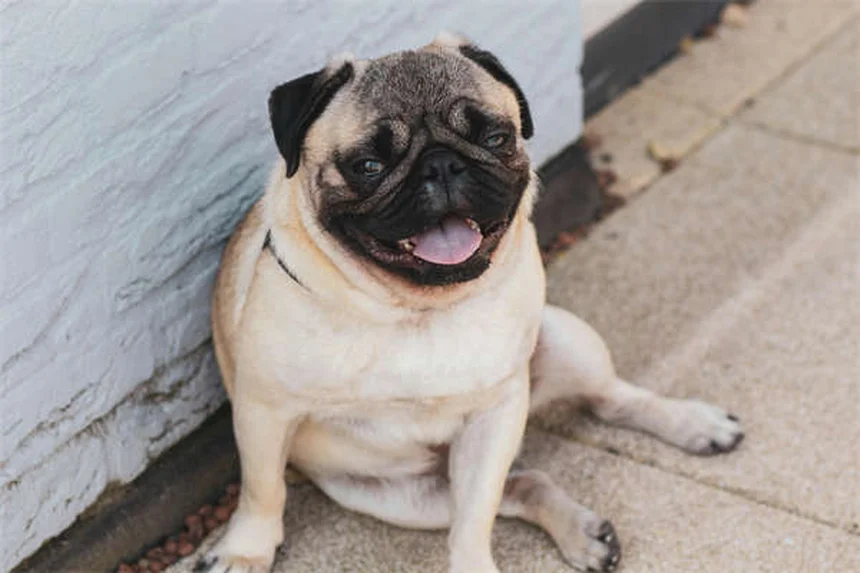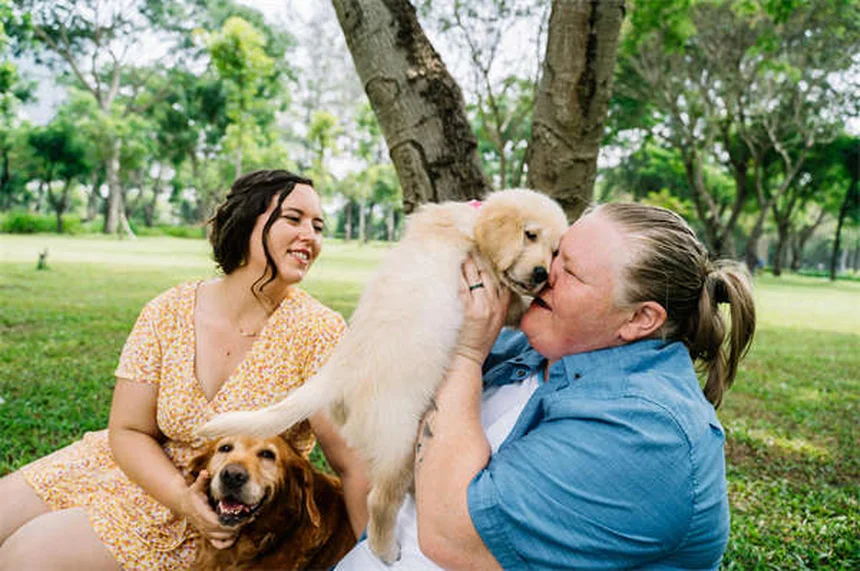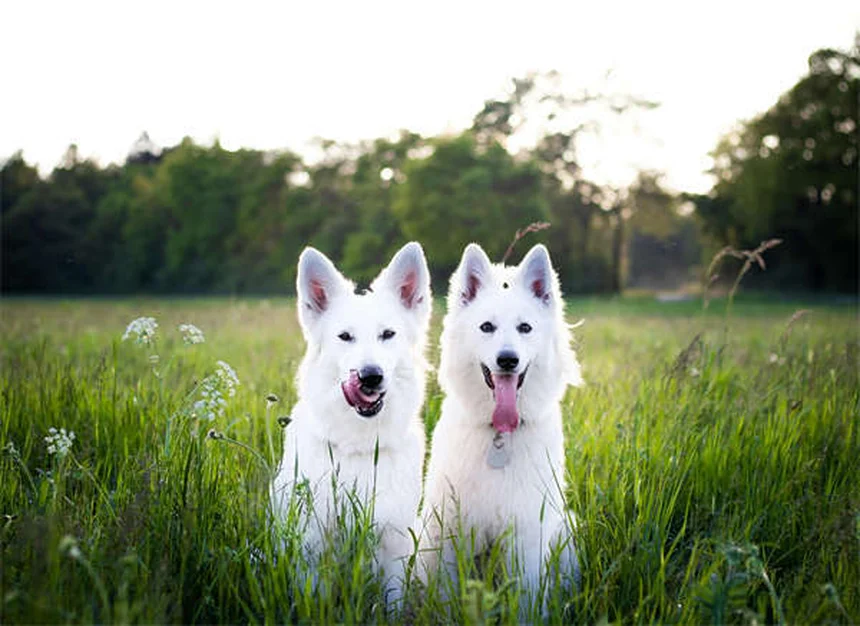Advertisement
Why do cats purr? The answer might surprise you! While we often think purring means a cat is happy, the truth is cats purr for many different reasons - from showing contentment to self-healing. I've been studying feline behavior for years, and let me tell you, that rumbling sound is way more complex than most people realize.Here's the deal: Your cat's purr can mean I love this! when they're curled in your lap, but it can also mean I'm stressed at the vet's office or even I'm in pain. The key is to look at their body language. A relaxed posture with slow blinks? Happy purr. Crouched low with flattened ears? That's a different story entirely.What fascinates me most is how kittens start purring at just two days old - before their eyes even open! And get this - research suggests those vibrations might actually help cats heal faster. Pretty amazing, right? Stick around as we dive deep into the mysterious world of cat purrs.
E.g. :Palliative Care for Cats: 5 Comfort Tips for Your Feline Friend
- 1、The Fascinating World of Cat Purring
- 2、The Many Meanings Behind Cat Purrs
- 3、Kitten Purrs: The Cutest Sound Ever
- 4、Decoding Your Cat's Purr Language
- 5、Purring Mysteries Solved
- 6、Final Thoughts on Feline Purring
- 7、The Science Behind Those Magical Vibrations
- 8、Purring Across the Animal Kingdom
- 9、Purring Through the Ages
- 10、Training Yourself to Be a Purr Detective
- 11、Purring Technology of the Future
- 12、FAQs
The Fascinating World of Cat Purring
What Exactly is That Rumbling Sound?
You know that wonderful vibrating noise your cat makes when curled up in your lap? That's purring - one of the most iconic sounds in the animal kingdom! But here's something wild - cats actually produce this sound with their mouth completely closed. How cool is that?
The magic happens when air moves over the vocal folds during breathing. These folds open and close super fast - we're talking 20 to 40 times per second! This rapid movement creates that distinctive rumbling vibration we all love. Fun fact: Your cat's diaphragm helps maintain this continuous purr through both inhales and exhales.
Happy Purrs vs. Stress Purrs
Most people think purring means "I'm happy!" And often, that's true. When your kitty is:
- Snuggled in your lap getting pets
- Basking in a sunny spot
- Kneading their favorite blanket
- Enjoying a tasty meal
...that purr is definitely a contentment meter running at full power!
But did you know cats also purr when stressed? This blew my mind when I first learned it. Some cats will actually purr at the vet's office or when feeling anxious at home. It's like their version of humming to calm nerves. Who knew our feline friends had such complex emotional lives?
The Many Meanings Behind Cat Purrs
 Photos provided by pixabay
Photos provided by pixabay
1. The "Life is Good" Purr
This is the classic happy purr we all recognize. Picture this: your cat's sprawled out, eyes half-closed, maybe making biscuits with their paws. Their body is completely relaxed - tail still, ears forward. That's the gold standard of feline bliss!
I've noticed my cat Max purrs loudest during our evening cuddle sessions. The moment I sit on the couch, he materializes out of nowhere, jumps up, and starts his motor running. It's like he's saying, "This is exactly where I want to be right now."
2. The "Help Me" Purr
Here's where things get interesting. Ever heard your cat purring but noticed they seem tense? Maybe their ears are back slightly, or they're crouched low to the ground. This could be a distress signal rather than a happy sound.
Veterinarians report many cats purr during exams when clearly stressed. Some researchers think the vibrations might actually help heal injuries or reduce pain. Isn't that amazing? Nature gave cats their own built-in healing mechanism!
Kitten Purrs: The Cutest Sound Ever
Tiny Purring Machines
Kittens start purring incredibly early - like, two days old early! That's before their eyes even open. These little furballs purr while nursing, creating the sweetest bonding experience with mom.
Here's a comparison of kitten vs. adult cat purring habits:
| Behavior | Kittens | Adult Cats |
|---|---|---|
| Purring while eating | Almost always | Sometimes |
| Purring when stressed | Rare | Common |
| Purring to greet others | Frequent with littermates | Common with trusted humans |
 Photos provided by pixabay
Photos provided by pixabay
1. The "Life is Good" Purr
Have you ever wondered why kittens seem to purr constantly? It's actually crucial for their survival! The vibrations help mom locate them, and the sound strengthens their bond. Plus, it probably feels good - like a baby's pacifier.
My friend's kitten purrs so loudly during meals that you can hear it across the room. It's like she's saying, "This milk is AMAZING, mom!" while vibrating with joy.
Decoding Your Cat's Purr Language
Body Language is Key
Here's a pro tip: Always check your cat's posture when they purr. A happy purr comes with:
- Relaxed whiskers
- Slow-blinking eyes
- Upright tail (maybe with a little quiver at the tip)
But if you see:
- Flattened ears
- Tucked tail
- Dilated pupils
...that purr might mean "I'm not okay" rather than "I'm happy."
The Attention-Seeking Purr
Ever had your cat rub against your legs while purring loudly? That's the feline equivalent of saying, "Hey you! Yes, you! I require pets immediately!" Some cats even develop special "urgent" purrs when they really want something.
My cat has perfected what I call the "breakfast purr" - an insistent, slightly higher-pitched vibration he uses exclusively at 5 AM when demanding food. It's impossible to ignore, and honestly, kind of impressive how effective it is!
Purring Mysteries Solved
 Photos provided by pixabay
Photos provided by pixabay
1. The "Life is Good" Purr
This is basically your cat giving you a performance review: "Employee of the Month right here! Keep up the good work with those scratches." The purr confirms you've found their sweet spots and should continue exactly what you're doing.
The Healing Power of Purrs
Did you know cat purrs vibrate at frequencies between 25-150 Hz? Studies suggest these frequencies may promote bone healing and reduce pain. Some researchers even think purring helps cats:
- Heal faster from injuries
- Maintain muscle tone during long rest periods
- Reduce breathing difficulties
Isn't nature incredible? Cats basically come with built-in physical therapy!
Final Thoughts on Feline Purring
Every Purr Tells a Story
Next time your cat purrs, take a moment to observe the context. Are they blissed out in a sunbeam? Nervously awaiting a vet exam? Politely requesting dinner? Each situation gives the purr unique meaning.
I've learned so much about cat communication since paying closer attention to purrs. It's like cracking a secret code where vibrations equal emotions. And the more I understand, the deeper my bond grows with my feline friends.
Purr-fect Harmony
Whether it's a kitten's first tiny purrs or an elderly cat's comforting vibrations at life's end, this remarkable sound remains one of nature's most beautiful inventions. So the next time your cat revs up their motor, take it as the incredible compliment it is - they're choosing to share this special part of themselves with you.
The Science Behind Those Magical Vibrations
How Purring Affects Human Health
You know that warm, fuzzy feeling you get when your cat purrs on your lap? Turns out it's not just emotional - there's real science behind it! Studies show that listening to cat purrs can:
- Lower your blood pressure by up to 10%
- Reduce stress hormones like cortisol
- Increase production of "feel-good" endorphins
I remember when I was studying for finals last year - my cat would curl up on my textbooks and purr. At first it was annoying, but then I noticed something wild. My heart rate actually slowed down, and I could focus better. Now I actively seek out purr therapy during stressful times!
The Frequency Phenomenon
Here's something that'll blow your mind - cat purrs operate at the same frequency range (25-150 Hz) that doctors use in vibration therapy for bone fractures! Isn't that crazy? This explains why cats heal so quickly from injuries.
Check out how purr frequencies compare to medical treatments:
| Application | Frequency Range | Effect |
|---|---|---|
| Cat purring | 25-150 Hz | Bone healing, pain relief |
| Medical vibration therapy | 20-50 Hz | Fracture healing |
| Ultrasound therapy | 1-3 MHz | Tissue repair |
Purring Across the Animal Kingdom
Not Just House Cats!
When we think of purring, we usually picture domestic cats. But guess what? Many wild felines purr too! Cheetahs, cougars, and even some big cats like mountain lions produce similar vibrations.
The difference? House cats can purr continuously while inhaling and exhaling. Big cats like lions and tigers can only purr while exhaling. Who knew our little house panthers had such an impressive skill?
The Great Purring Debate
Ever wonder why some cats seem to purr louder than others? It's not just your imagination! Breed, size, and even personality play roles. For example:
- Siamese cats often have softer, more melodic purrs
- Maine Coons can produce deep, rumbling vibrations
- Rescue cats sometimes develop unique purr patterns
My neighbor's Persian cat has this hilarious snorty purr that sounds like a tiny motorcycle with a cold. It's completely different from my tabby's smooth engine-like purr!
Purring Through the Ages
Ancient Humans and Cat Purrs
Did you know humans have been benefiting from cat purrs for thousands of years? Ancient Egyptians revered cats not just as hunters, but as living healing companions. Some historians believe they intentionally bred cats with stronger purrs for therapeutic purposes.
Imagine being an Egyptian pharaoh with a bad headache - just call in the royal purring cats! While we can't prove this actually happened, it's fun to picture ancient people discovering the healing power of purrs.
Purring in Modern Therapy
Today, some hospitals and nursing homes use "therapy cats" to help patients recover. The combination of soft fur, warm bodies, and those magical vibrations creates a powerful healing environment.
I visited a children's hospital last year where a therapy cat named Mr. Whiskers worked his magic. Kids who were afraid of shots would calm down immediately when he purred on their laps. The nurses called him their "furry antidepressant"!
Training Yourself to Be a Purr Detective
Creating a Purr Journal
Want to really understand your cat's purrs? Try keeping a purr journal for a week! Note:
- Time of day
- Body position
- What happened before/after
- Purr volume and tone
After just a few days, you'll start seeing patterns emerge. Maybe your cat always purrs extra loud at 3 PM when the sun hits their favorite spot. Or perhaps they have a special "I want treats" purr you never noticed before!
The Art of Purr Interpretation
Here's a fun experiment: Next time your cat purrs, try matching their vibration with your own humming. You'll be amazed at how difficult it is to sustain that frequency! It really makes you appreciate what incredible little machines cats are.
My nephew tried this with our cat and ended up in a hilarious purr-off contest. The cat won, obviously - but it was adorable watching a 7-year-old attempt to out-purr a feline!
Purring Technology of the Future
Purr-Inspired Medical Devices
Scientists are actually developing vibration therapy devices based on cat purrs! Early prototypes show promise for treating osteoporosis and muscle atrophy. Who would've thought our pets would inspire medical breakthroughs?
Imagine telling your cat: "Hey Fluffy, your purring might help grandma walk better!" They'd probably just blink at you and demand treats, but still - it's pretty cool!
The Purrfect Sleep Aid
Can't sleep? There are now apps that play recorded cat purrs to help people relax. Some even adjust the frequency based on your breathing patterns. While it's not quite the same as a real cat on your chest, it's a nice alternative for cat-less folks!
I tried one of these apps when traveling without my cat. It was surprisingly effective - though I did wake up once reaching to pet my imaginary purring cat. Maybe stick with the real thing when possible!
E.g. :Why Do Cats Purr? 5 Meanings Behind a Purring Cat | PetMD
FAQs
Q: Why do cats purr when you pet them?
A: When your cat purrs while you're petting them, it's like they're giving you a gold star for your scratching skills! This is typically a sign they're enjoying the interaction and want you to continue. I've noticed my cat Max purrs loudest when I hit just the right spot behind his ears. But here's a pro tip: watch their body language too. If they start twitching their tail or flattening their ears, that purr might mean "Okay, that's enough now." Cats use purring as communication, so always pay attention to the whole picture.
Q: Can cats purr when they're sick or in pain?
A: Absolutely, and this is something every cat owner should know. While we usually associate purring with happiness, cats often purr when they're not feeling well. Veterinarians call this a "self-soothing" mechanism - like how humans might hum when nervous. The vibrations may actually help with healing too! Studies show cat purrs vibrate at frequencies (25-150 Hz) that can promote bone strength and tissue repair. So if your normally active cat is purring while lying still and seems "off," it's worth a vet visit.
Q: Why do kittens purr so much while nursing?
A: Those tiny purring machines start young - like, two-days-old young! When kittens nurse, their purrs serve multiple purposes. First, it helps mom locate them (newborns can't see yet). Second, it strengthens their bond. But here's the coolest part: researchers believe the vibrations might actually stimulate milk production! It's nature's perfect system - the kittens get nourishment while telling mom "More please!" I've fostered many litters, and there's nothing sweeter than hearing that chorus of miniature purrs during feeding time.
Q: Do all cats purr the same way?
A: Not at all! After years of observing cats, I've noticed each has their own unique "purrsonality." Some cats have barely audible purrs, while others sound like motorcycles. The volume and pitch can vary based on their mood too. My friend's cat has an "urgent" purr she uses only when demanding food - it's higher pitched and impossible to ignore! Interestingly, big cats like lions can't purr continuously like our domestic cats can. They make more of a chuffing sound instead. So that comforting rumble is something special only your house cat can do!
Q: Can purring actually benefit human health?
A: You bet! Science suggests that listening to a cat's purr might lower stress and blood pressure in humans. The vibrations are within a range (20-140 Hz) that's therapeutic for bone growth and pain relief. Many physical therapists use similar frequencies in healing devices! Personally, I find my cat's purring incredibly calming after a long day. There's even a term for it - "purr therapy." So next time your cat curls up purring on your lap, remember: you're not just bonding, you might be getting health benefits too!





